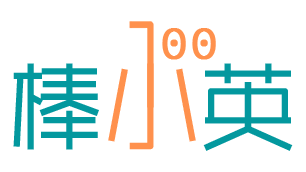
Going Solar
走向太阳能
One night in May, a group of people gathered around a computer monitor on a rooftop. They were scientists from the California Institute of Technology (Caltech). The monitor was linked to equipment that could receive transmissions from a satellite. The satellite was 300 miles out in space.
在五月的一个晚上,一群人聚集在屋顶上的计算机监视器周围。他们是加利福尼亚理工学院(Caltech)的科学家。监视器连接着能接收卫星传输的设备。那颗卫星距离太空中有300英里。
Around 10 p.m., they got a signal. The satellite was collecting sunlight. On their monitor, the scientists watched as their equipment turned that solar energy into electrical power. “It took it a few moments to sink in,” Ali Hajimiri says. He’s one of the scientists leading the project. “Then everyone got really excited.”
大约在晚上10点,他们收到了一个信号。卫星正在收集阳光。在他们的监视器上,科学家们看到他们的设备将太阳能转化为电力。“这花了一些时间让我们理解,”阿里·哈吉米里说。他是该项目的领导之一。“然后每个人都变得非常兴奋。”
The experiment was a success. But it’s just a first step. Eventually, the scientists hope to gather the sun’s energy in giant satellites orbiting Earth and beam it down to the power grid.
实验取得了成功。但这只是第一步。最终,科学家们希望在围绕地球轨道上的巨大卫星中收集太阳能,并将其传输到电力网格。
Solar panels in space would produce a constant stream of power. And they would work even when it was cloudy on Earth. “In space, it’s always noon on a sunny day,” Hajimiri says.
太空中的太阳能板将产生持续的能量流。即使地球上多云,它们也能工作。“在太空中,一直都是阳光明媚的中午,”哈吉米里说。

A Lighter Satellite
更轻便的卫星
The idea of solar space stations isn’t new. Science fiction writers thought of it years ago.
太阳能空间站的概念并不新鲜。多年前就有科幻作家想到了这个想法。
The problem is getting these power stations into space. The glass solar panels would have to be huge. That would make them heavy. The cost of launching the parts into orbit would be tremendous. (See “Rising Possibility.”)
问题在于将这些发电站送入太空。玻璃太阳能板必须非常庞大,这使它们变得沉重。将零部件送入轨道的成本将是巨大的。
So the Caltech scientists are creating a new kind of solar panel. This one is made out of lightweight materials. And they’re replacing bulky antennas with tiny ones. These fit onto ultrathin sheets (see photo). They release energy and can beam it to any spot on Earth. “You’ve gone from a giant elephant to an army of ants of these individual transmitters,” Hajimiri says.
因此,加州理工学院的科学家们正在研发一种新型的太阳能板。这种太阳能板由轻质材料制成。他们用微小的天线替代了笨重的天线。这些天线安装在超薄的板上(见照片)。它们释放能量并可以将其传输到地球上的任何地方。“你已经从一个巨大的大象变成了一群这些个体发射器的蚂蚁,”哈吉米里说。
The scientists hope to build a system that can produce enough solar power to charge a laptop from space. That work could take five years. From there, they will scale up to a full-fledged power station.
科学家们希望建立一个能够从太空产生足够太阳能为笔记本电脑充电的系统。这项工作可能需要五年的时间。之后,他们将扩大规模建设成一座完整的发电站。
Research Continues
研究在持续
Caltech is not the only organization that’s interested in solar power stations. China is planning a mission in 2028 to test its technology. And the European Space Agency is looking to build gigantic solar space stations.
加州理工学院并不是唯一对太阳能发电站感兴趣的组织。中国计划在2028年进行一项测试技术的任务。欧洲航天局也计划建造巨大的太阳能空间站。
For now, the Caltech scientists will continue with their experiments. Their satellite managed to send some energy to Earth. But other parts didn’t work. These include the frame for the solar panels. It failed to unfold.
目前,加州理工学院的科学家们将继续进行实验。他们的卫星设法向地球发送了一些能量。但其他部分没有运作。其中包括太阳能板的框架。它未能展开。
But the recent experiment proved that the technology works in space. With more research, it could reach commercial use in the coming decades.
但最近的实验证明了这项技术在太空中是有效的。通过更多研究,它可能在未来几十年内实现商业化。
“While there are still hurdles to overcome for large-scale wireless energy transfer of space solar,” Hajimiri says, “this gets us closer.”
“尽管在太空太阳能的大规模无线能量传输方面仍有障碍需要克服,”哈吉米里说,“但这让我们更加接近。”

Rising Possibility
崛起的可能性
The biggest obstacle to building solar power stations in space is not the technology. It’s the cost. Launching the materials is too expensive.
在太空建造太阳能发电站的最大障碍不是技术,而是成本。将材料送入太空的费用太昂贵。
That’s changing. The aerospace company SpaceX has been testing reusable rockets (above). Reusing rockets will bring down the cost of a launch. The end cost of gathering solar energy and sending it to Earth will be less. And that will make it more practical.
这正在发生改变。航天公司SpaceX一直在测试可重复使用的火箭(如上图所示)。重复使用火箭将降低发射成本。收集太阳能并将其发送到地球的最终成本将减少。这将使其更加实用。



